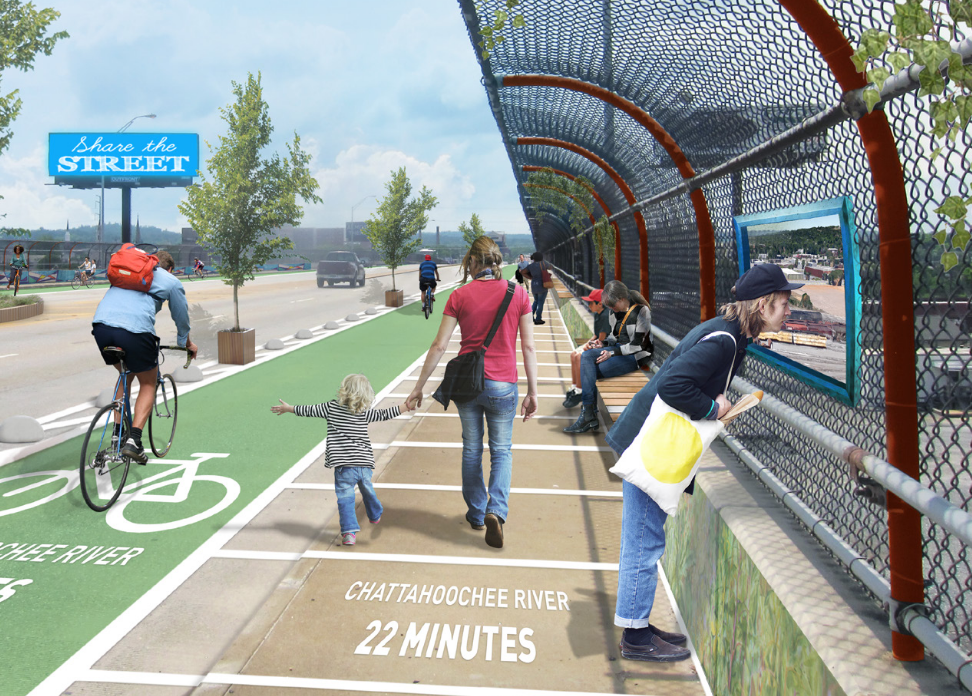A pilot project in Columbus, Georgia, is the latest chapter in an effort to improve walking, bicycling, and public space in this city along the Alabama border.
This week, nearly three-quarters of a mile of 13th Street, including a viaduct over a rail yard just east of downtown Columbus, was trimmed from three lanes in each direction to two. Barrels were set up for a two-week pilot project to determine if the road diet should be made permanent.
Over the trial period, neighborhood non-profit MidTown Inc. will host bike-to-work rides, an outdoor evening market, and additional events to encourage people to think of the 13th Street viaduct as more than a speedway.
The Columbus Ledger-Enquirer reports that the changes are part of a bigger vision:
“What we’re trying to do is create an environment that brings life back to the street, creates a calmer and slower 13th Street with these temporary outside lane closures,” said Anne King, executive director of MidTown Inc., an organization that works to improve life in the city’s central core. “It’s to demonstrate that businesses can flourish, and that cars, people, walkers and cyclists can coexist on this important connection between Uptown and Midtown.” [...]
Part of the issue now is that many motorists speed through the test area — particularly over the wide bridge — essentially blowing by businesses that shriveled and died after their on-street parking was eliminated years ago to make way for two extra lanes. That move crowded the corridor and made it uncomfortable for sidewalk pedestrians only a couple of feet from rushing traffic.
The move comes on the heels of a permanent road diet further east on 13th Street, which changed a half-mile stretch between 13th Avenue and Cherokee Avenue from four lanes in each direction to two lanes, plus a center turning lane and bike lanes. That project also added flashing beacons at a crosswalk to alert drivers to pedestrians.
The changes, implemented by the City of Columbus with the approval of the Georgia Department of Transportation, come out of MidTown Inc.'s "Minimum Grid: Maximum Impact" initiative, which includes a public space and mobility plan developed by Gehl Studio in 2015 [PDF]. The plan, which lays out additional pilot projects to improve walking and bicycling in Columbus, was funded by a $199,000 grant from the Knight Foundation.





